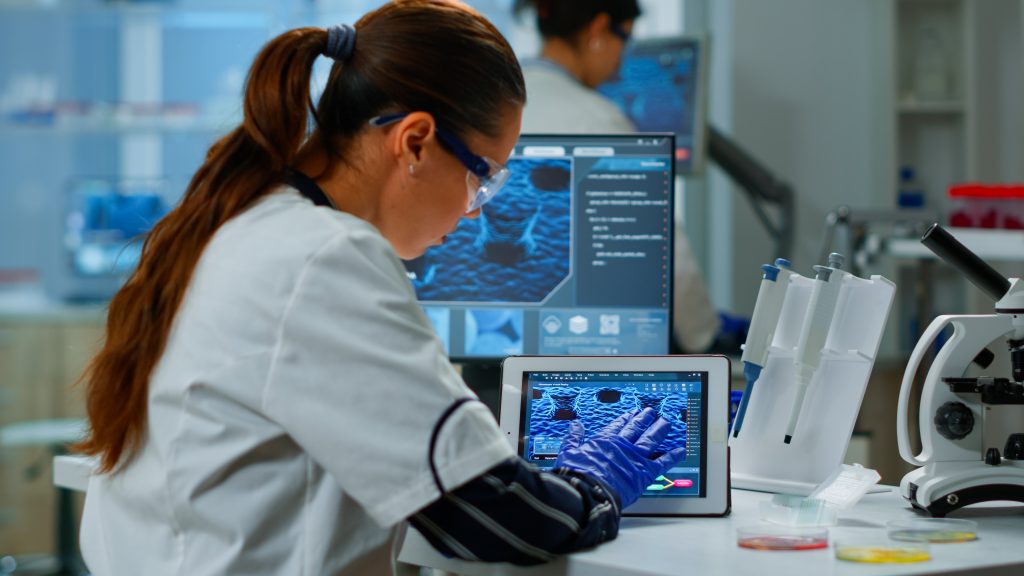
In today’s digital era, technology has revolutionized the healthcare industry, transforming how patient information is stored, shared, and accessed. However, with these advancements come concerns about data security and privacy, particularly when it comes to complying with the Health Insurance Portability and Accountability Act (HIPAA). This article explores the crucial intersection of HIPAA and technology, providing insights into how healthcare organizations can navigate the digital landscape while ensuring compliance.
Understanding HIPAA in the Digital Age
HIPAA (Health Insurance Portability and Accountability Act) is a vital law enacted in the United States to protect the privacy and security of citizens’ health information. In an era where digital technology plays a significant role in healthcare, understanding HIPAA in the digital age is essential.
HIPAA was first created in 1996, long before the rapid development of technology that has changed the healthcare landscape. The digital era has brought numerous innovations, such as electronic health records (EHRs), telemedicine, health apps, wearables, and cloud computing, that have fundamentally changed how patient data is stored, transmitted, and accessed. However, with these advances come new challenges and considerations for HIPAA compliance.
One of the main concerns in the digital age is the security of electronic health information. Healthcare entities must ensure robust security measures to safeguard patient data from unauthorized access, breaches, and cyber threats. The HIPAA Security Rule provides guidance on implementing administrative, physical, and technical safeguards to protect electronic protected health information (ePHI). This includes measures such as encryption, access control, audit logs, regular risk assessments, employee training, and disaster recovery plans.
In addition, the digital age has witnessed the proliferation of mobile medical applications and wearable devices that collect and transmit personal health information. HIPAA compliance applies to these technologies if they are used by covered entities, such as healthcare providers, health plans, or their business associates. Developers of medical apps and wearable devices must meet HIPAA’s privacy and security standards for processing protected health information.

The Role of Technology in HIPAA Compliance
As technology plays an increasingly pivotal role in healthcare, it is vital for organizations to leverage it effectively while adhering to HIPAA regulations. Here are key areas where technology intersects with HIPAA compliance:
Electronic Health Records (EHR)
Electronic health record systems enable the electronic storage and management of patients’ health information. Implement robust security measures, such as encryption and access controls, within EHR systems to ensure the confidentiality and integrity of PHI.
Data Encryption
Encryption serves as a critical component of HIPAA compliance, protecting sensitive data during storage and transmission. Employ robust encryption methods to secure data at rest and in transit, minimizing the risk of unauthorized access.
Secure Communication Channels
HIPAA mandates the use of secure communication channels for transmitting PHI. Technologies such as secure email, virtual private networks (VPNs), and secure messaging platforms ensure that sensitive information remains confidential when shared among healthcare professionals.
Access Controls
Technology empowers healthcare organizations to implement granular access controls, ensuring that only authorized individuals can access PHI. Unique user IDs, strong passwords, and two-factor authentication should be employed to bolster the security of systems and applications.
Risk Assessments and Audits
Technology tools facilitate regular risk assessments and audits, aiding in the identification of vulnerabilities in the infrastructure. These assessments help healthcare organizations proactively address security gaps and maintain compliance with HIPAA regulations.

Understanding HIPAA Rules for Electronic Health Information
The Health Insurance Portability and Accountability Act (HIPAA) is an important piece of legislation that sets rules and standards for the protection and handling of electronic health information (EHI). With the increasing digitalization of healthcare, understanding and complying with these regulations is paramount to protecting patient privacy and ensuring data security.
Protected Health Information (PHI)
Under HIPAA, covered entities or business associates create, receive, or maintain individually identifiable health information, which is known as Protected Health Information (PHI). This includes information related to an individual’s past, present, or future physical or mental health, health care operations, or payment for health care.HIPAA regulations require the protection of PHI in electronic, paper, or oral formats.
Covered Entities and Business Associates
HIPAA rules apply to two main categories of organizations: covered entities and business associates. Covered entities include healthcare providers, health plans, and health information clearinghouses. Business associates are individuals or organizations that perform services on behalf of covered entities and have access to PHI. Both Covered Entities and Business Associates have legal obligations to protect PHI and comply with HIPAA rules.
Privacy Rule
The HIPAA Privacy Rule establishes guidelines for the protection, use, and disclosure of PHI. They provide patients with certain rights, such as the right to access their health information, the right to request corrections, and to limit certain uses and disclosures. Covered entities must have policies and procedures in place to ensure patient privacy, train their staff in privacy practices, and obtain patient consent for certain uses and disclosures of their health information.
Security Rule
HIPAA’s Security Rule focuses on the technical and physical safeguards needed to protect electronic PHI (ePHI). It requires covered entities and business associates to take steps to ensure the confidentiality, integrity, and availability of ePHI. This includes implementing access controls, encryption, audit controls, and contingency plans in the event of an emergency or data breach. Risk assessments and regular security evaluations are also necessary to identify and mitigate potential vulnerabilities.
Breach Notification Rule
HIPAA’s Breach Notification Rule requires covered entities and business associates to report any unauthorized receipt, access, use, or disclosure of unsecured PHI. Timely notification of a breach allows affected individuals and regulators to take appropriate action to protect patient privacy and mitigate potential harm. Covered entities must have breach response plans in place to promptly identify and remediate security incidents.
Enforcement and Penalties
Civil Rights (OCR) is responsible for enforcing HIPAA and investigating reports of breaches. HIPAA violations carry penalties ranging from fines to criminal charges based on breach severity. Covered entities and business associates must prioritize HIPAA compliance to uphold patient trust and avoid legal repercussions.
Conclusion
In conclusion, navigating the intersection of HIPAA and technology is crucial in today’s digital era of healthcare. The rapid advancements in technology have transformed how patient information is stored, shared, and accessed, bringing both opportunities and challenges. To ensure compliance with HIPAA regulations, healthcare organizations must implement robust security measures, such as encryption and access controls, to protect patient data from unauthorized access and cyber threats. Additionally, developers of medical applications and wearable devices must ensure that their products meet the privacy and security standards set forth by HIPAA.
Understanding the rules and requirements of HIPAA, such as the Privacy Rule, Security Rule, and Breach Notification Rule, is vital for safeguarding patient privacy and maintaining data security. Failure to comply with HIPAA regulations can result in significant penalties, highlighting the importance of taking HIPAA compliance seriously. By embracing technology while adhering to HIPAA guidelines, healthcare organizations can effectively navigate the digital landscape, ensuring the confidentiality and integrity of patient information.
But if you still have questions regarding the interrelationship between HIPAA and Technology, feel free to contact us!







